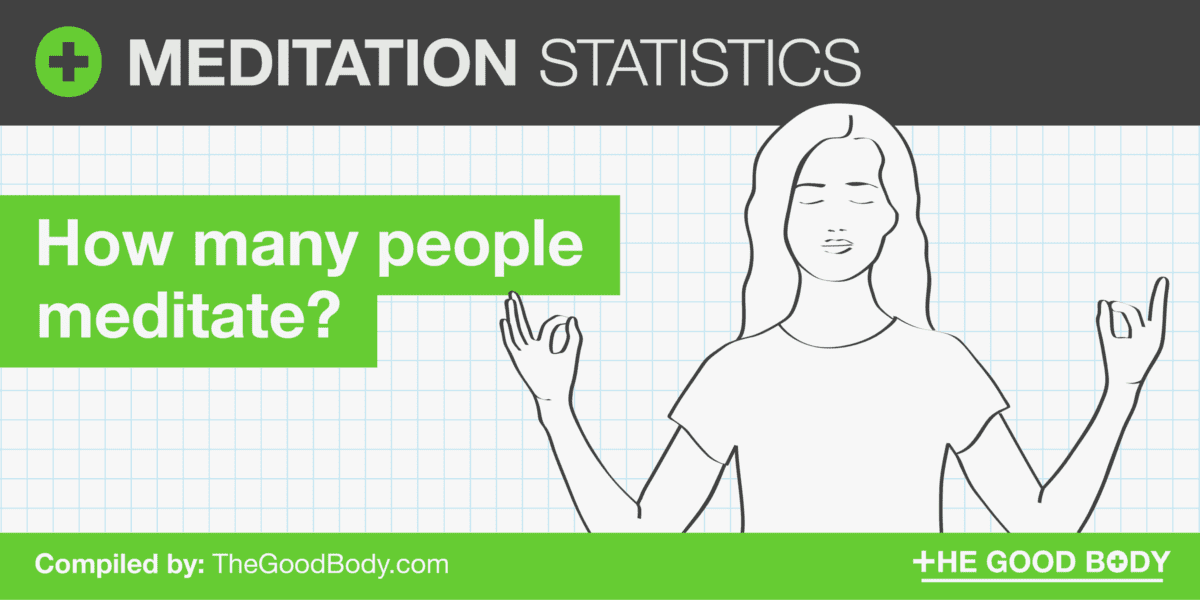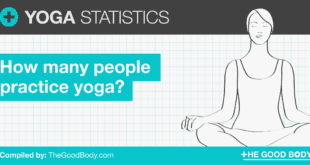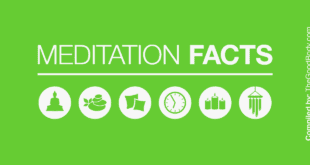In our data-driven summary of the latest meditation statistics, you’ll learn more about the growth, who is practicing most and the value of the industry.
Let’s take a closer look at 28 fascinating statistics about meditation:
Key Meditation Statistics: Data and Trends
- Between 200 and 500 million people meditate globally.
- Over 14% of US adults have tried meditating at least once.
- 7% of US children regularly practice meditation.
- Women are twice as likely to meditate compared to men.
- Adults aged 45-64 are the age group that meditates the most.
- In the last 10 years, the number of US adults practicing meditation has tripled.
- The value of the US meditation and mindfulness industry is estimated to be $2.07 billion.
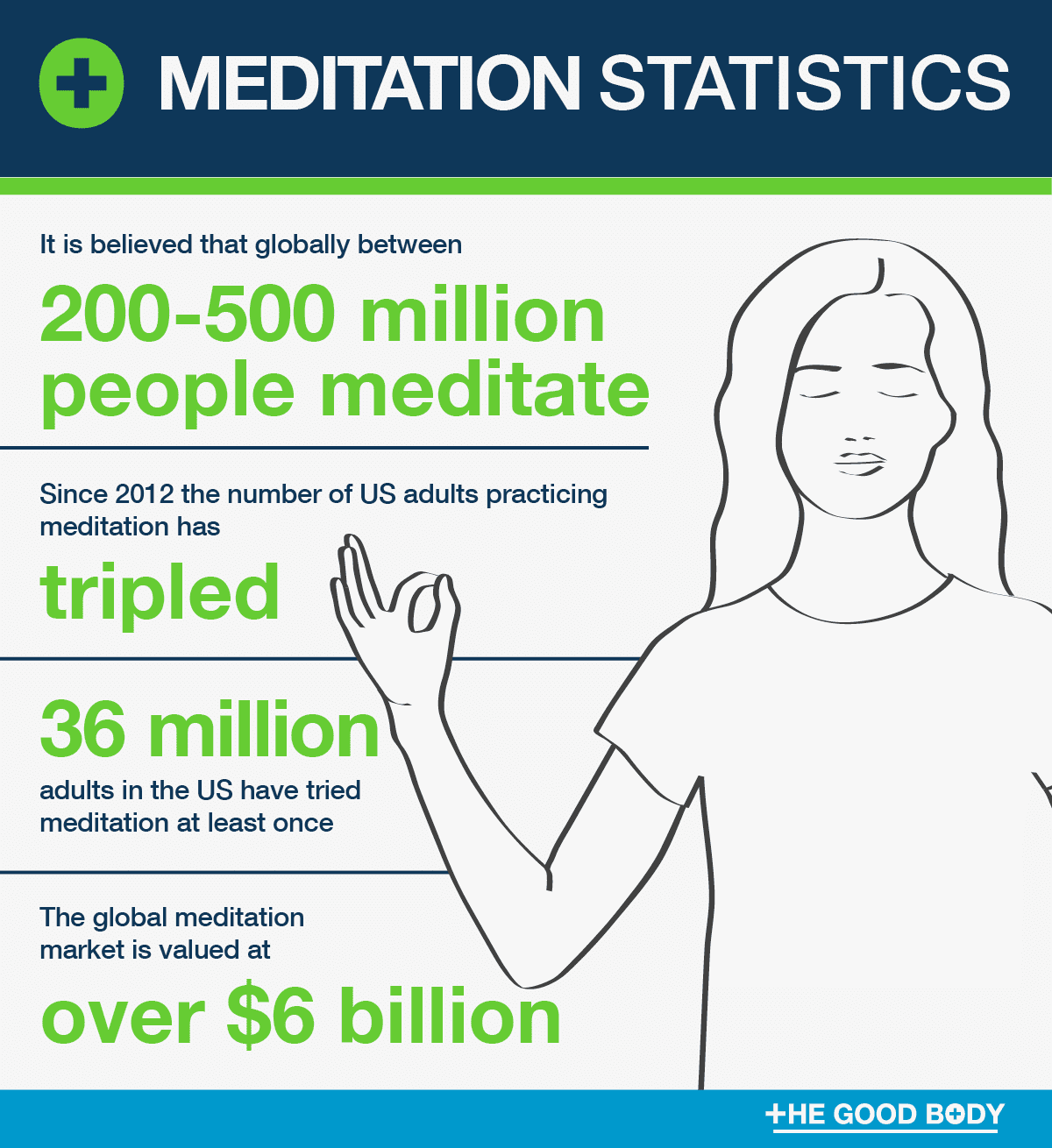
How many people meditate?
It is believed that globally, between 200 and 500 million people meditate.[1]
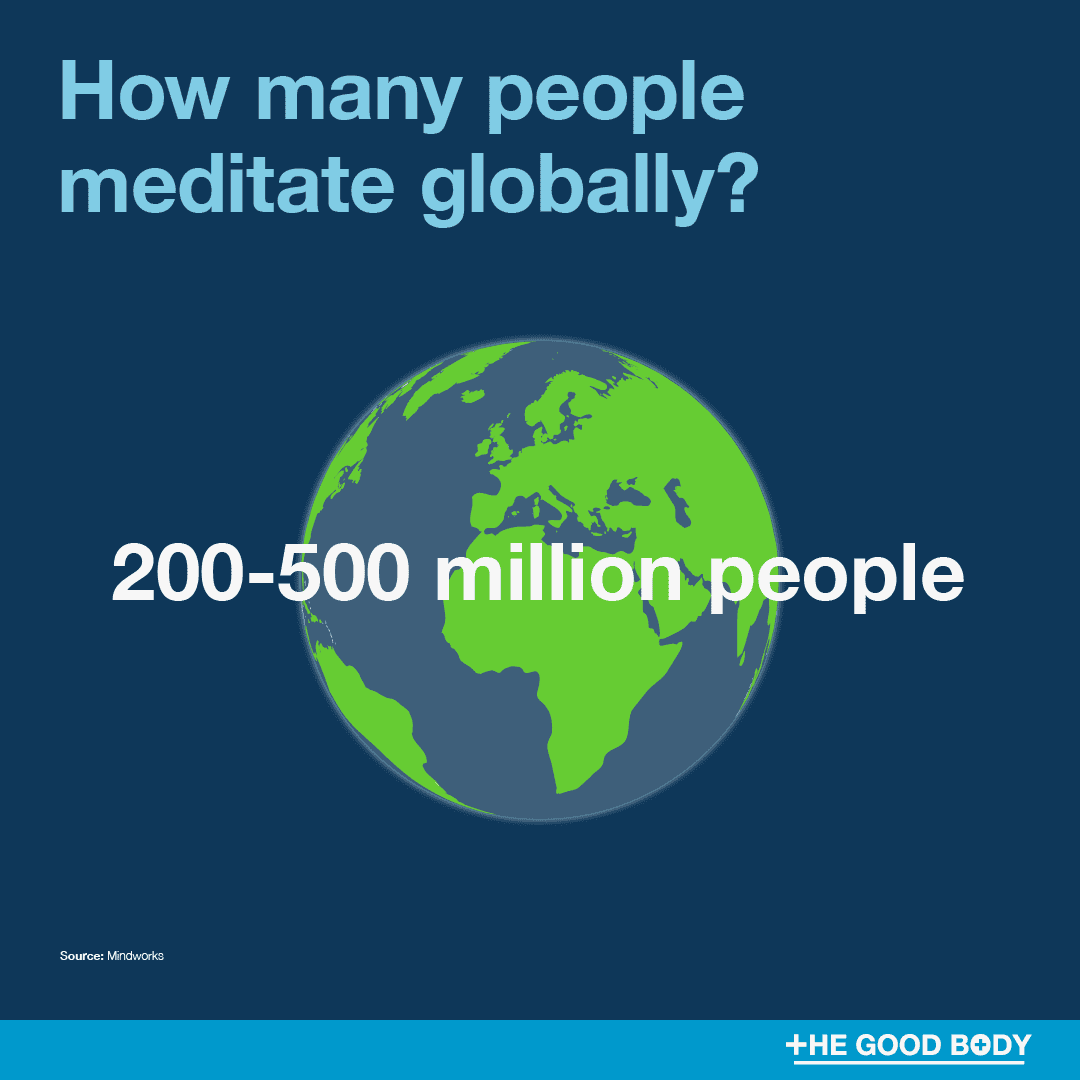
In fact, according to the latest statistics, over 14% of US adults have tried meditation at least once.[2]
With an estimated adult population in the US of 260 million adults that works out at nearly 36 million people.
Another piece of research, published by Pew Research Centre in 2014, suggested the number was even higher. They reported that as many as 40% of Americans claim to meditate at least once a week.[3]
Meditation is now one of the most popular mind and body practices in the US, just behind yoga[4]:
- Yoga (14.3%)
- Meditation (14.2%)
- Chiropractor (10.3%)
7% of children in America also meditate, which is not surprising when you consider the many benefits of meditation for children.[5]
Who meditates the most?
Women and adults aged 45-64 are the age group that practices meditation the most, according to the latest statistics from the National Health Interview Survey.[6].
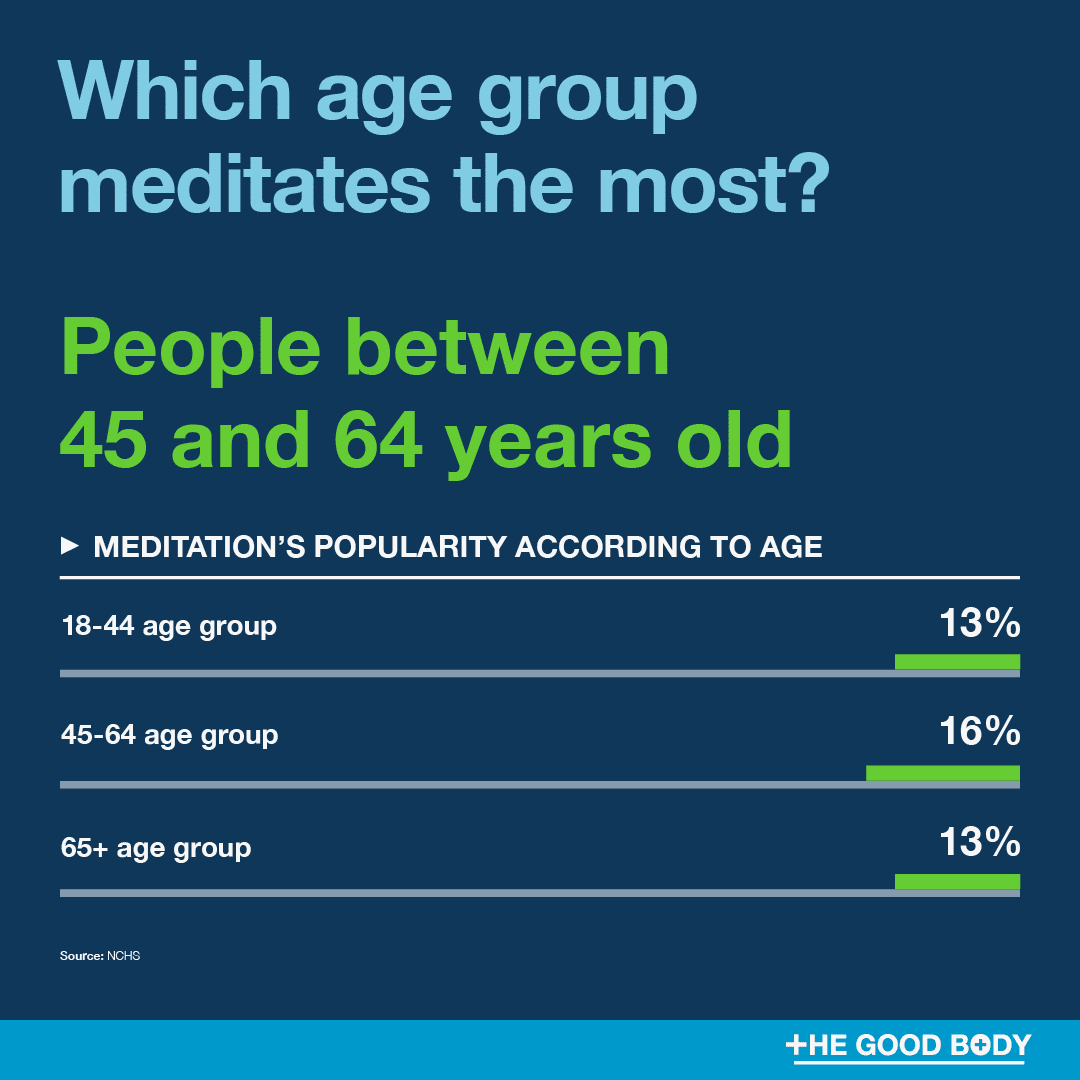
Here is the popularity of meditation by age group:
- 45-64 age group (15.9%)
- 18-44 age group (13.4%)
- 65+ age group (13.4%)
Data published in the Journal of Women’s Health shows that 10.3% of women use meditation, compared to 5.2% of men.[7]
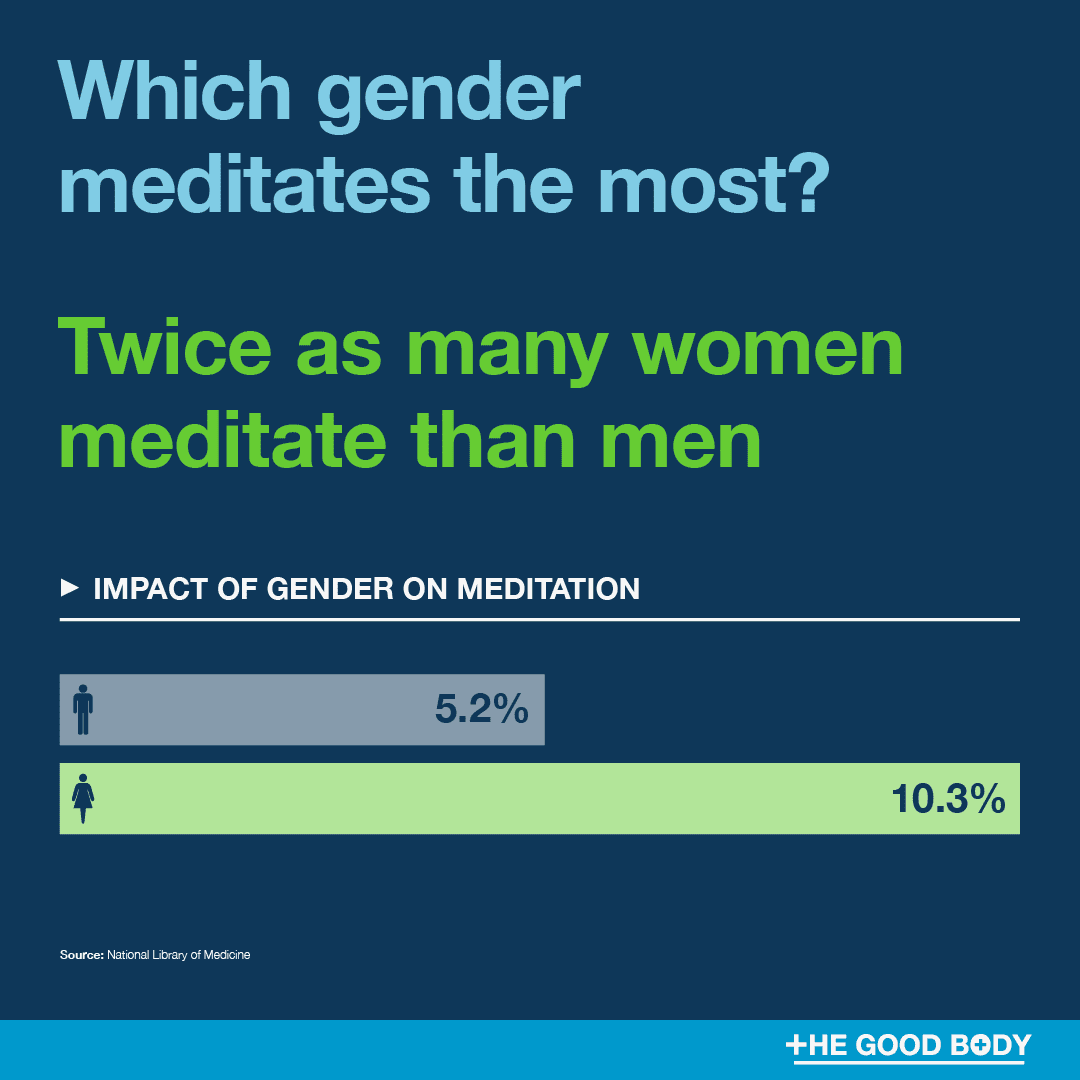
Little is known about why women choose to practice more, however research does show that they can enjoy more benefits than men.
It’s believed that the reason for this is down to the way different genders process emotional distress.
Men tend to externalize their feelings, whereas women internalize and ruminate over an issue, an emotional response which can respond well to meditation.
Is meditation becoming more popular?
Meditation is becoming more popular. Since 2012 the number of people practicing meditation has tripled among US adults.[8]
The practice has grown among children too, from just 1.6% to 7%.[9]
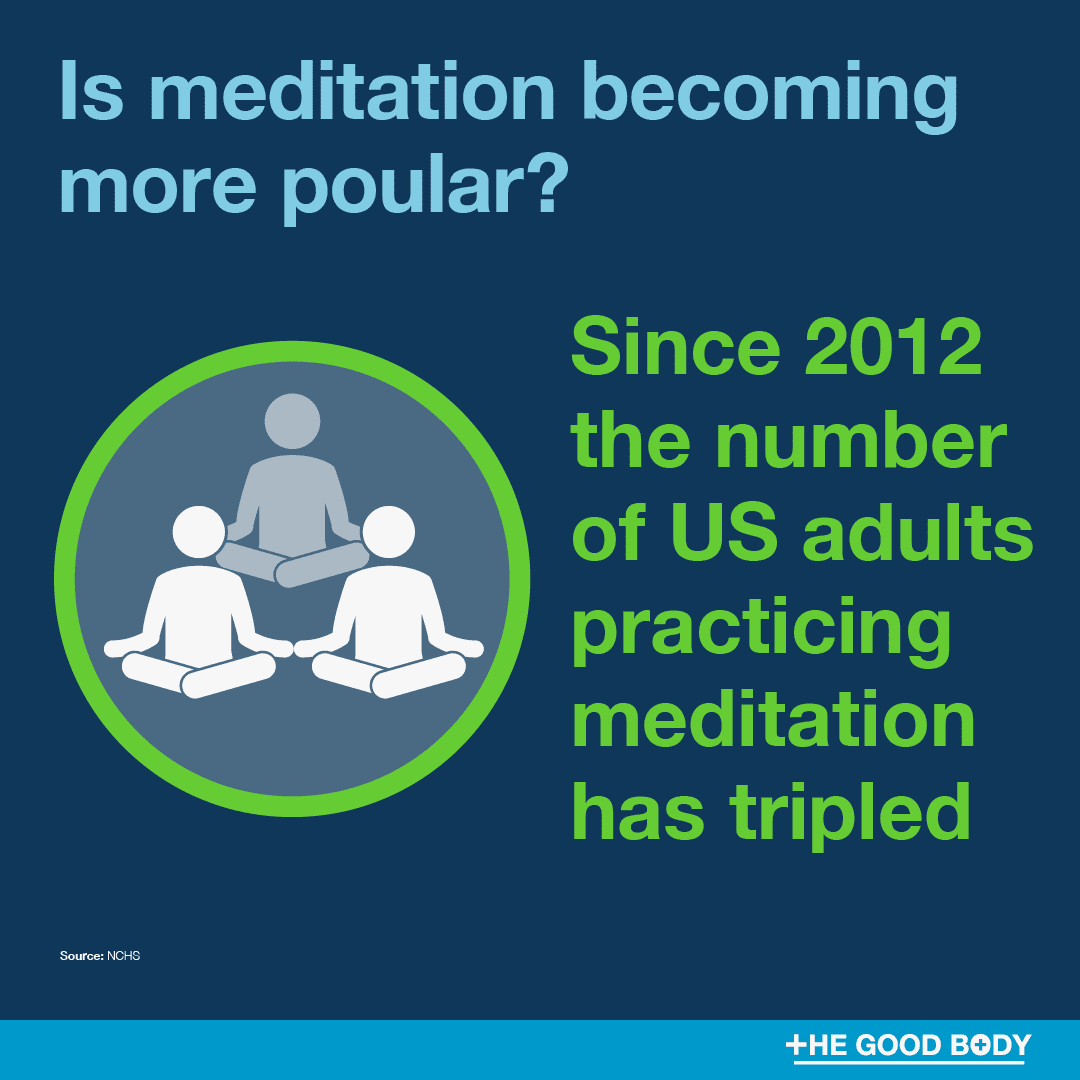
What is the number one meditation app?
Calm has been downloaded nearly 100 million times, making it the number one meditation app.
Rival app Headspace, has been downloaded 65 million times.
The value of the meditation apps market was valued at $1.1 billion in 2021, and is expected to grow to $6.8 billion by 2030.

How big is the meditation market?
In the US alone, the meditation market is estimated to be worth $2.07 billion.[10]
The global meditation market is valued at over $6 billion and is expected to grow to $14.6 billion by 2027.[11]
Estimates include money spent on classes, apps and meditation gifts such as books and online courses.
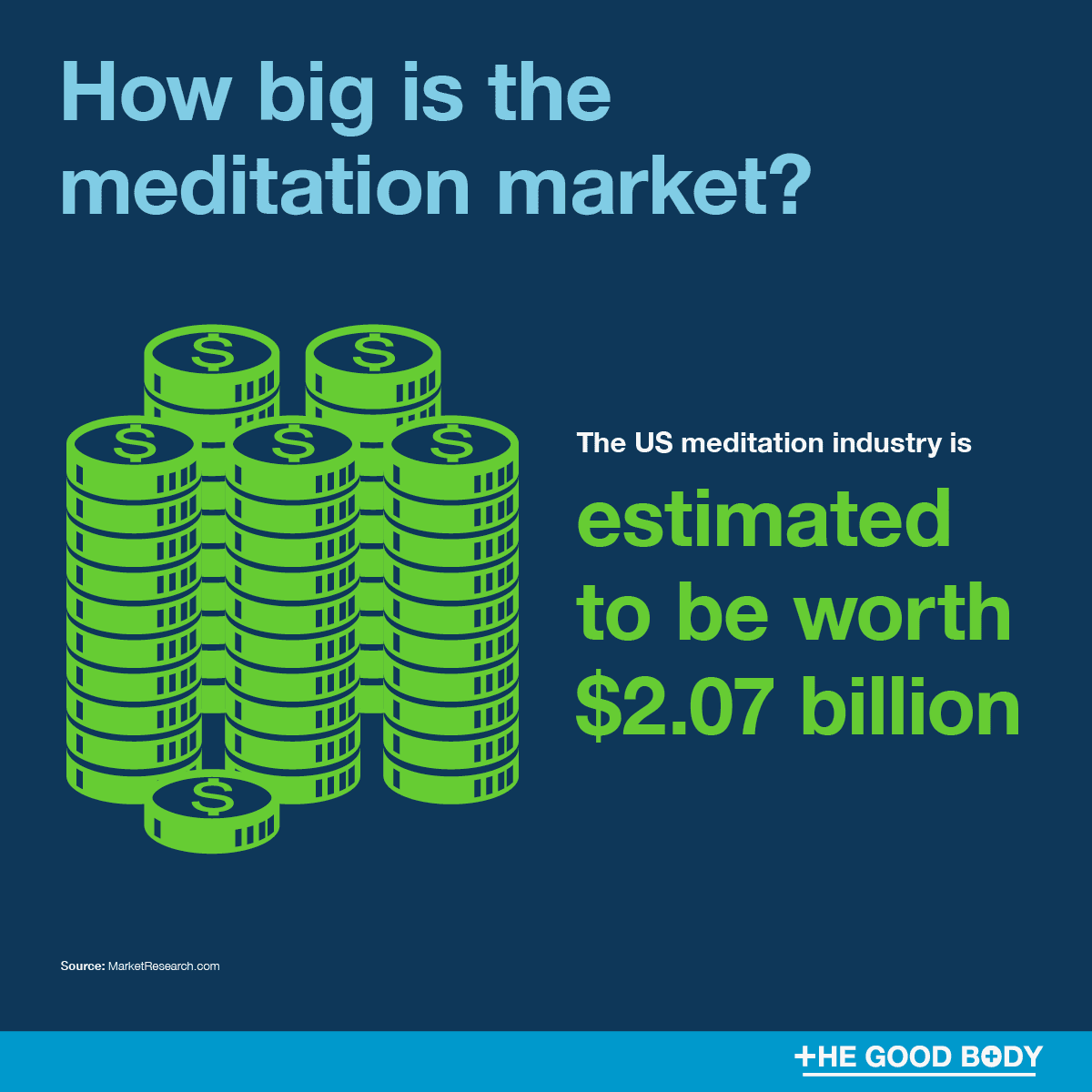
What is the main benefit of meditation?
Meditation has a wealth of health benefits — it can decrease stress and anxiety, make you feel happier and improve your memory!
It can ease physical pain, too. One interesting back pain statistic shows that back pain sufferers practicing meditation are more likely to experience a 30% improvement in their ability to carry out daily tasks compared to those only taking medication.
Research also shows that people who meditate can reduce their chance of being hospitalized for coronary heart disease by 87%.[12]
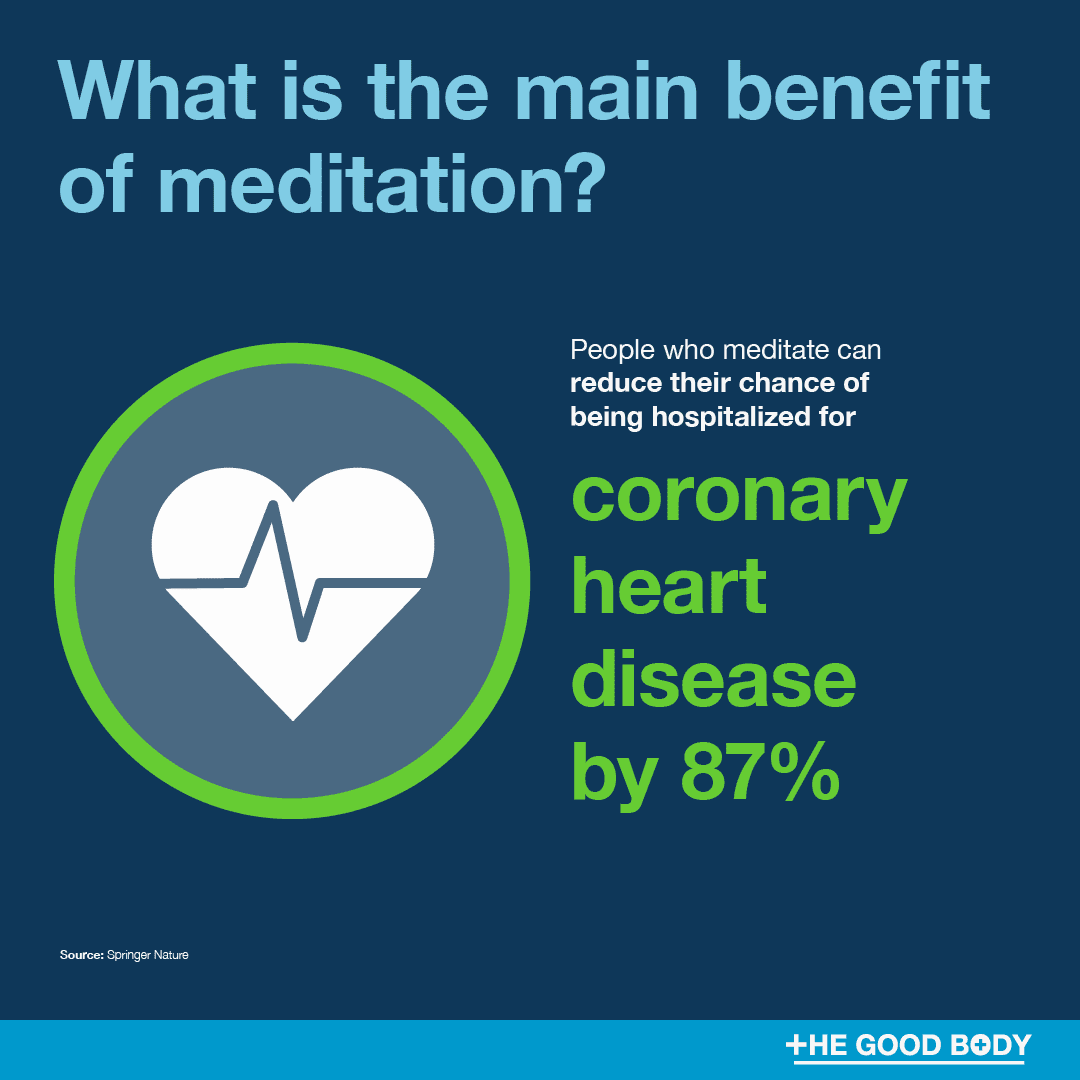
Meditation even has the power to increase telomerase, an enzyme needed to delay the onset of diseases including Alzheimer’s, by 43%.[13]
When asked why they started meditating, participants in the 2012 US National Health Interview Survey gave the following top reasons[14]:
- General wellness (76.2%)
- Improving energy (60%)
- Aiding memory or concentration (50%)
- Anxiety (29.2%)
- Stress (21.6%)
- Depression (17.8%)
In the case of all the above conditions, 60% of the people questioned in the study reported that meditation helped them significantly.
Classroom Meditation Statistics
Due to the many mental health advantages, an estimated 3.1 million US children now learn mindfulness meditation in school.[15]
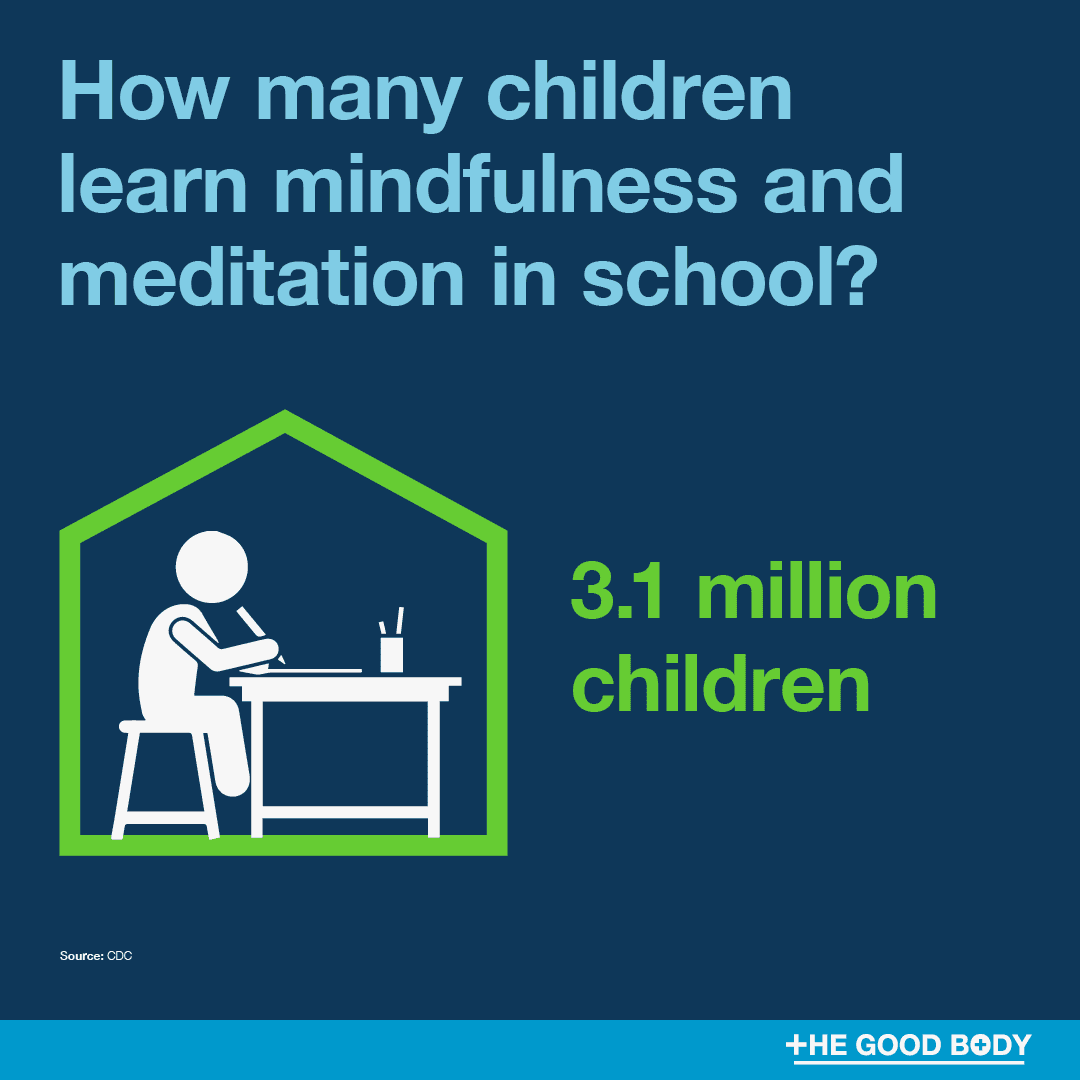
A survey revealed in 2015 that nearly 1000 schools across the US now include mindfulness meditation practices as part of their curriculum.[16] The number in 2023 is expected to be much higher.
One school in San Francisco actually managed to reduce suspensions by 45% after introducing a meditation program.[17]
There is even evidence to show that meditation can give classroom age children one extra hour of sleep each night![18]
Meditation in the Workplace
According to the National Business Group on Health, approximately 52% of employers offer meditation packages as part of their company benefits for employees.[19]

One company in Detroit, that was way ahead of the curve in the 1980s, actually found that meditation increased productivity by 120%![20]
The yoga community is growing, too…
Interested in learning more about another mind and body practice?
Read our article including 41 yoga statistics that you need to know!
References
- Mindworks (2017). How Many People Meditate? [Online]. Available from: https://mindworks.org/blog/how-many-people-meditate/ [Accessed 19 September 2023]. ↩
- National Center for Health Statistics (2018). Use of Yoga and Meditation Becoming More Popular in U.S. [Online]. Available from: https://www.cdc.gov/nchs/pressroom/nchs_press_releases/2018/201811_Yoga_Meditation.htm [Accessed 19 September 2023]. ↩
- Masci, D. and Hackett, C. (2018). Meditation is common across many religious groups in the U.S. [Online]. Pew Research Center . Available from: https://www.pewresearch.org/short-reads/2018/01/02/meditation-is-common-across-many-religious-groups-in-the-u-s/ [Accessed 19 September 2023]. ↩
- Clarke, T. et al (2018). Use of Yoga, Meditation, and Chiropractors Among U.S. Adults Aged 18 and Over [Online]. NCHS Data Brief. Available from: https://www.cdc.gov/nchs/data/databriefs/db325-h.pdf [Accessed 19 September 2023]. ↩
- Wang, C., Li, K. and Gaylord, S. (2019). Prevalence, patterns, and predictors of meditation use among U.S. children: Results from the National Health Interview Survey [Online]. Complementary therapies in medicine. Available from: https://www.ncbi.nlm.nih.gov/pmc/articles/PMC6502253/ [Accessed 19 September 2023]. ↩
- Clarke, T. et al (see footnote 4) ↩
- Upchurch, D.M. and Johnson, P.J. (2019). Gender Differences in Prevalence, Patterns, Purposes, and Perceived Benefits of Meditation Practices in the United States [Online]. Journal of Women’s Health. Available from: https://pubmed.ncbi.nlm.nih.gov/30543475/ [Accessed 19 September 2023]. ↩
- Clarke, T. et al (see footnote 4) ↩
- Wang, C., Li, K. and Gaylord, S. (see footnote 5) ↩
- LaRosa, J. (2022). $1.8 Billion U.S. Meditation Market Grows with New Apps and the Growth of Yoga [Online]. MarketResearch.com. Available from: https://blog.marketresearch.com/1.8-billion-u.s.-meditation-market-grows-with-new-apps-and-the-growth-of-yoga [Accessed 19 September 2023]. ↩
- TBRC Business Research PVT LTD (2023). The Meditation Market Size Is Expected To Reach A Value Of $14.6 Billion By 2027 As Per The Business Research Company's Meditation Global Market Report 2023 [Online]. GlobeNewswire. Available from: https://www.globenewswire.com/news-release/2023/06/29/2697226/0/en/The-Meditation-Market-Size-Is-Expected-To-Reach-A-Value-Of-14-6-Billion-By-2027-As-Per-The-Business-Research-Company-s-Meditation-Global-Market-Report-2023.html [Accessed 19 September 2023]. ↩
- Marquez, R.J. (2022). Research shows meditation has power effects on the brain [Online]. KSAT. Available from: https://www.ksat.com/news/local/2022/01/09/research-shows-meditation-has-power-effects-on-the-brain/ [Accessed 19 September 2023]. ↩
- Khalsa, D.S. (2015). Stress, Meditation, and Alzheimer's Disease Prevention: Where The Evidence Stands [Online]. Journal of Alzheimer’s Disease. Available from: https://pubmed.ncbi.nlm.nih.gov/26445019/ [Accessed 19 September 2023]. ↩
- Cramer, H. et al (2016). Prevalence, patterns, and predictors of meditation use among US adults: A nationally representative survey [Online]. Scientific Reports. Available from: https://www.researchgate.net/publication/309880874_Prevalence_patterns_and_predictors_of_meditation_use_among_US_adults_A_nationally_representative_survey [Accessed 19 September 2023]. ↩
- Black, L.I. et al (2018). Use of Yoga, Meditation, and Chiropractors Among U.S. Children Aged 4–17 Years [Online]. National Center for Health Statistics. Available from: https://www.cdc.gov/nchs/products/databriefs/db324.htm [Accessed 19 September 2023]. ↩
- Butzer, B. et al (2015). School-based Yoga Programs in the United States: A Survey [Online]. Advances in Mind-Body Medicine`. Available from: https://pubmed.ncbi.nlm.nih.gov/26535474/ [Accessed 19 September 2023]. ↩
- Kirp, D.L. (2014). Meditation transforms roughest San Francisco schools [Online]. Available from: https://cwae.org/media/SF_Chron_1-13-14-4.pdf [Accessed 19 September 2023]. ↩
- Wilkins, A. (2021). Meditation found to give children more than an hour of extra sleep at night [Online]. Metro. Available from: https://metro.co.uk/2021/07/07/meditation-found-to-give-children-more-than-an-hour-of-extra-sleep-14889995/ [Accessed 19 September 2023]. ↩
- Bannan, K.J. (2020). Meditation Offerings Can Help Employees in Difficult Times [Online]. SHRM. Available from: https://www.shrm.org/resourcesandtools/hr-topics/employee-relations/pages/meditation-offerings-can-help-employees-in-difficult-times.aspx [Accessed 19 September 2023]. ↩
- Abrams, S. (2020). Mindfulness in the Workplace: Is it Worth the Hype? [Online]. Transcend Strategic Consulting. Available from: https://www.transcendstrategic.com/blog/2020/9/1/mindfulness-in-the-workplace-is-it-worth-the-hype [Accessed 19 September 2023]. ↩

